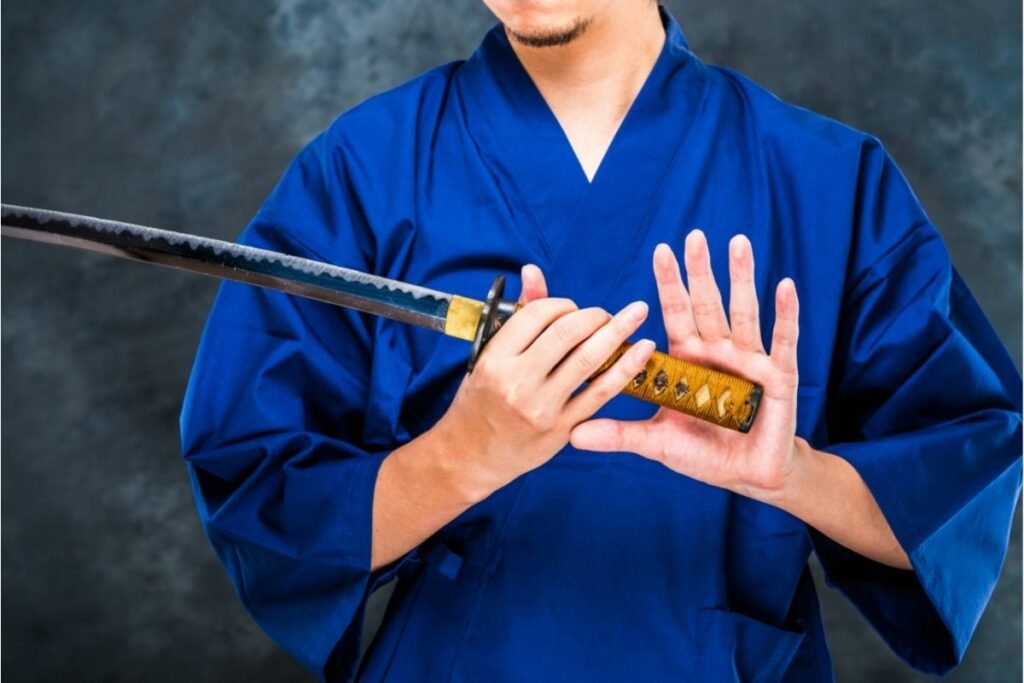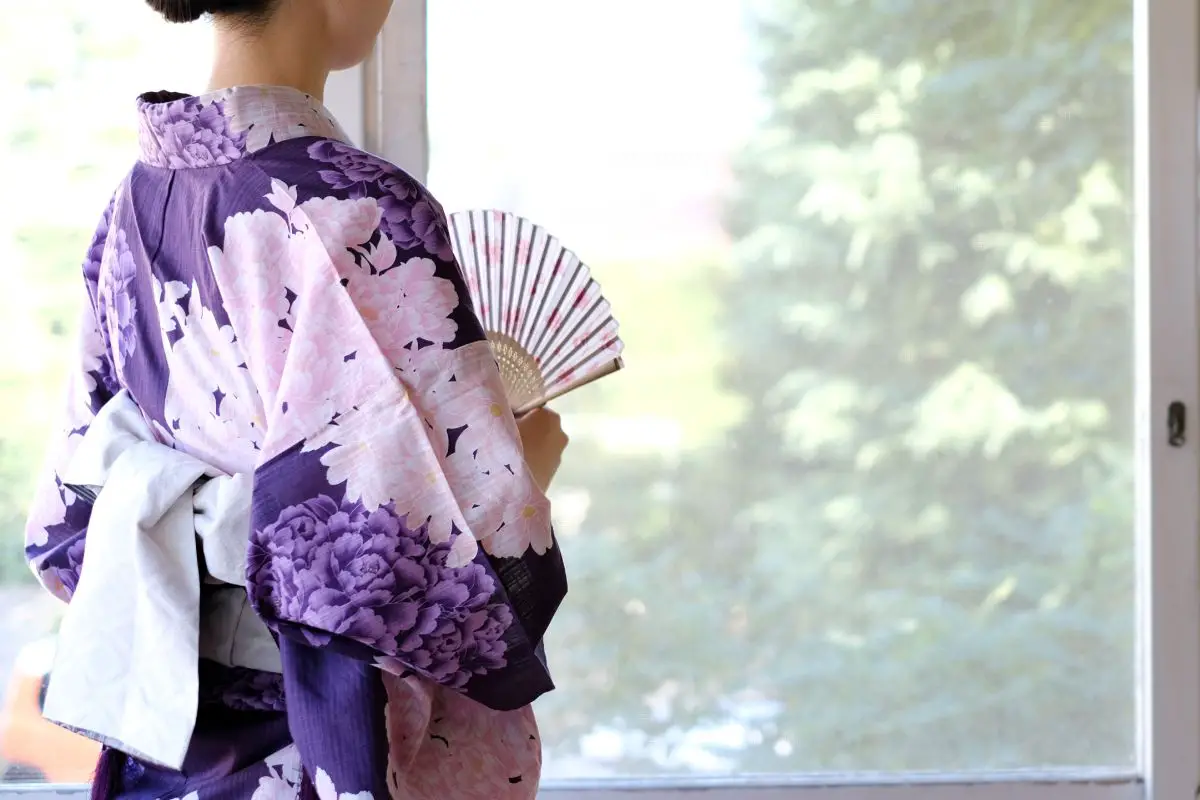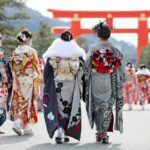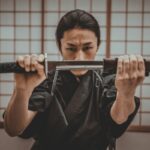The kimono is part of Japanese traditional dress that has transcended the world thanks to its beauty and chic look.
The kimono is secured with a decorative belt and has long, wide sleeves that form the shape of a T with the bodice. Traditionally, they are worn by both men and women with some subtle differences in style.
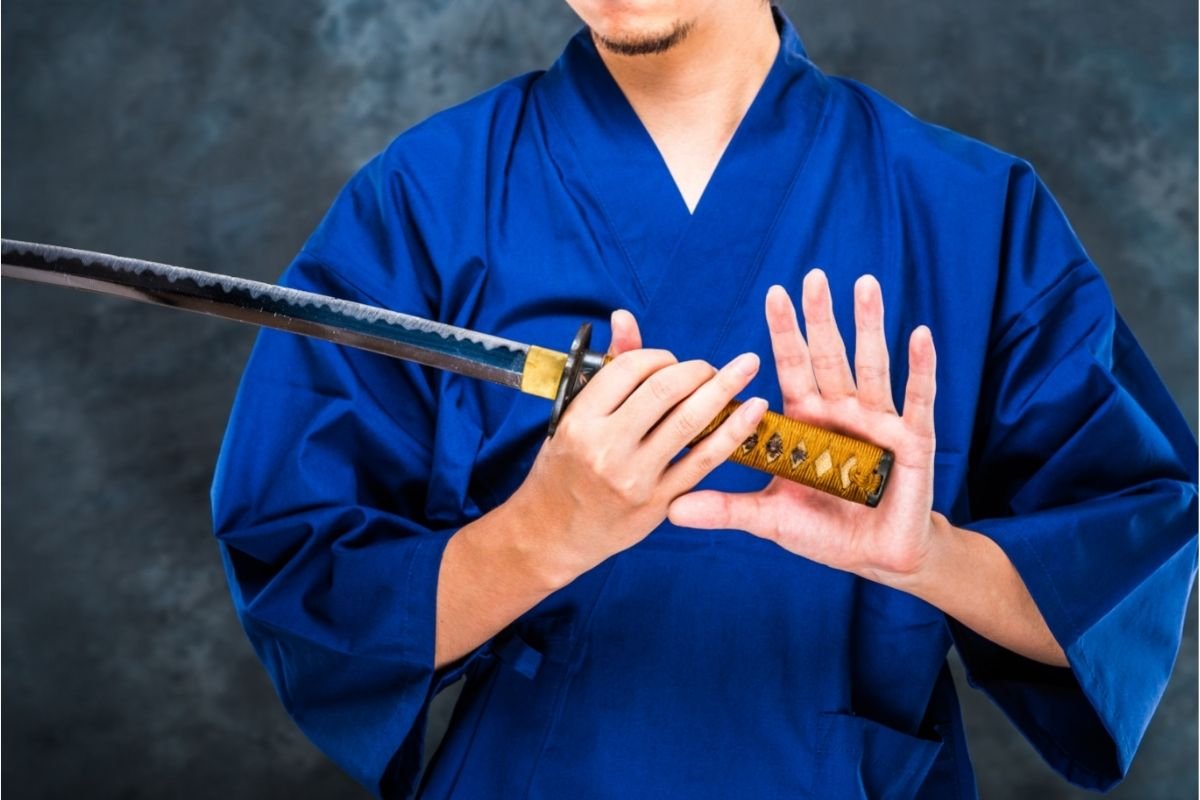
Keep reading to find out more about this fascinating garment.
A Brief History Of The Kimono
The modern kimono has its origins in the Wu dynasty in China. The original gofuku garments from this era changed a great deal as the rulers of China changed.
Eventually, the concept of the kimono was taken to other countries in Asia through trade and settlement.
From 800 to 1100 AD the kimono became a fundamental aspect of traditional Japanese dress. It became standard practice to layer silk robes in a style that eventually became a single, straight-cut piece garment.
During the Heian period from 794 to 1192 AD, the silk robes were sewn together into a robe that was adaptable to people in all walks of life.
The kimono can also be very flattering, so it is no wonder that it is still very popular and became a beloved, unisex garment from the Edo period (1603) onward.
Modern Day Kimonos
Until as recently as the 1930s, the vast majority of the Japanese population regularly wore the kimono.
In modern times, however, the use of the kimono is normally restricted to special occasions – funerals, festivals, weddings, and similar.
Do Men Wear Kimonos?
Yes, kimonos make up an important part of traditional Japanese dress for men. There are, however, some key differences between men and the more widely known women’s kimono style.
Firstly, it is much more common for men to wear two separate pieces of clothing that form the overall kimono apparel.
The hakama is a style of pants that are worn on the bottom half of the body, particularly in formal situations.
The patterns of the kimono are also different for a man versus a woman. It is rare for a man’s kimono to have any pattern at all, actually.
A formal kimono is likely to have the kamon or family symbol embroidered on, but that is about it. Women’s kimonos are a stark contrast.
Most kimonos that are worn by women feature detailed and ornate patterns that are related to nature. Flowers and other floral designs are some of the most popular.
You can now get kimono fabric that has more modern designs like a space nebula or pop culture references.
Women’s kimono fabric tends to be a bit more fun than their male counterparts. The same is true for the color palettes.
It is common for women to choose brightly colored kimonos. Vibrant and feminine colors like pink, red, and purple are the most popular and are used to create eye-catching and beautiful designs.
Male kimonos tend to stick with subtle or darker colors. Most men’s kimonos come in black, brown, gray, or navy.
The obi that holds the kimono together is similarly simple but can provide some color contrast to create some visual excitement.
The final thing to note on the differences between men’s and women’s kimonos is how ranks or hierarchies are distinguished.
For women, the more ornate and elaborate the kimono the higher their rank or the more formal the occasion. Look at the material of a man’s kimono to learn more about his rank or formality.
Types Of Men’s Kimonos
There are three basic types of men’s kimonos.
Firstly, a gentleman who wears a haori, nagagi, and a hakama as part of his kimono ensemble is either very formal or very high rank.
A gentleman who wears just the nagagi is either low rank or is dressing informally.
If you are wearing a haori and nagagi but no hakama, you are somewhere in between these two gentlemen in terms of formality and rank.
If you don’t want to venture down a traditional route and find a comfortable and casual kimono dress style, you can opt for a kimono without a haori layer.
This ensemble is called kinagashi and is still formal enough to wear out, without being too traditional.
The haori is a jacket or coat that acts as a light outer layer of the kimono. The hakama is the loose-fitting trousers that cover the lower half when worn.
These are often so loose that it is difficult to distinguish the individual legs. The nagagi is the core piece for all types of men’s kimonos that do not have any trousers or individual leg sections.
Haori
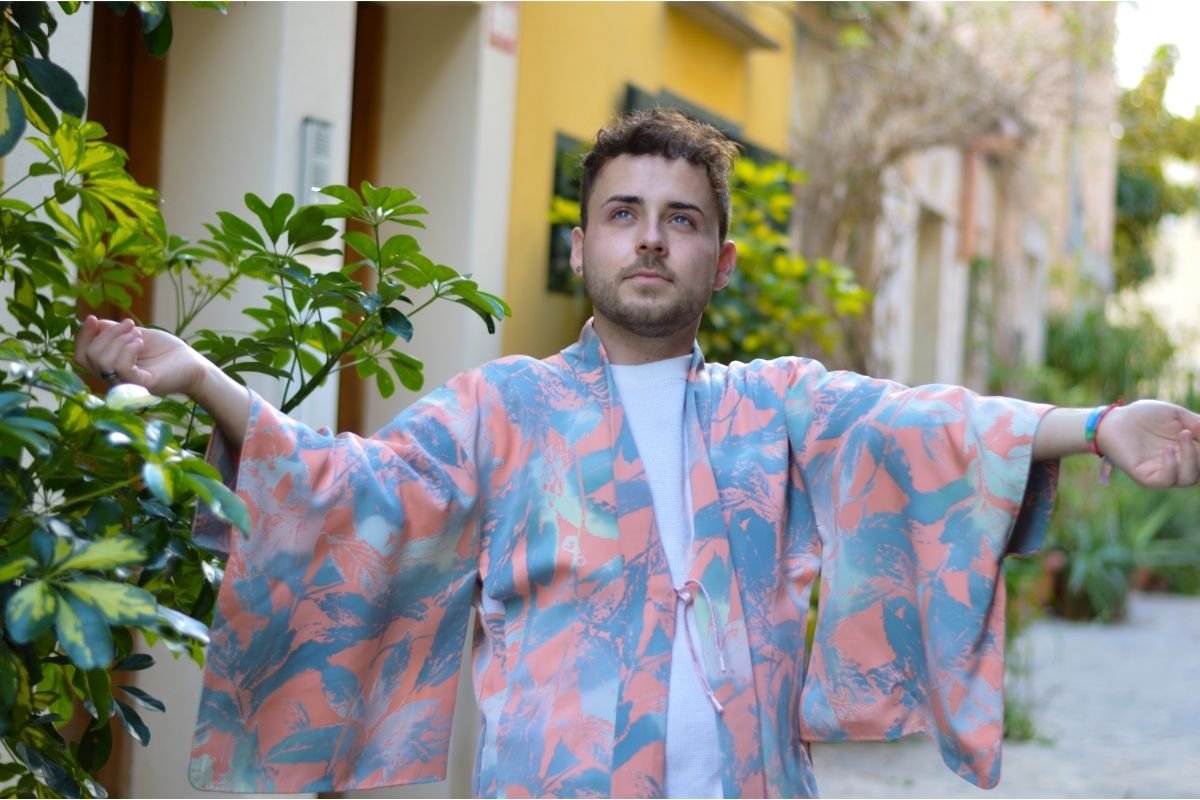
The haori of a kimono will be made out of a fairly basic weave of silk, this is called the habutai. Habutai fabric has one of the highest grades of silk purity.
This high purity means that the fabric is lightweight, very glossy, and smooth to the touch.
Hakama
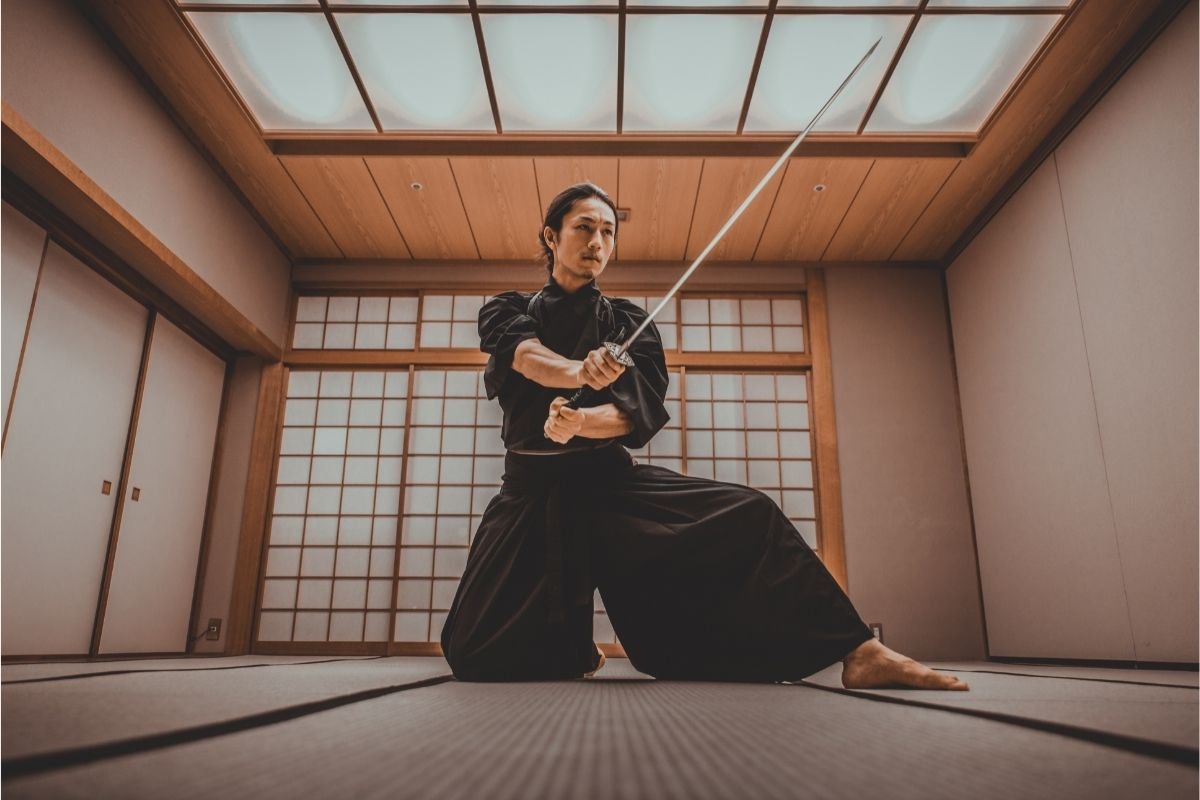
The hakama is made from silk that was first produced in the Sendai region of Japan. This sendaihira silk is also glossy but is most famous for its characteristic grey and white striped pattern.
Nagagi
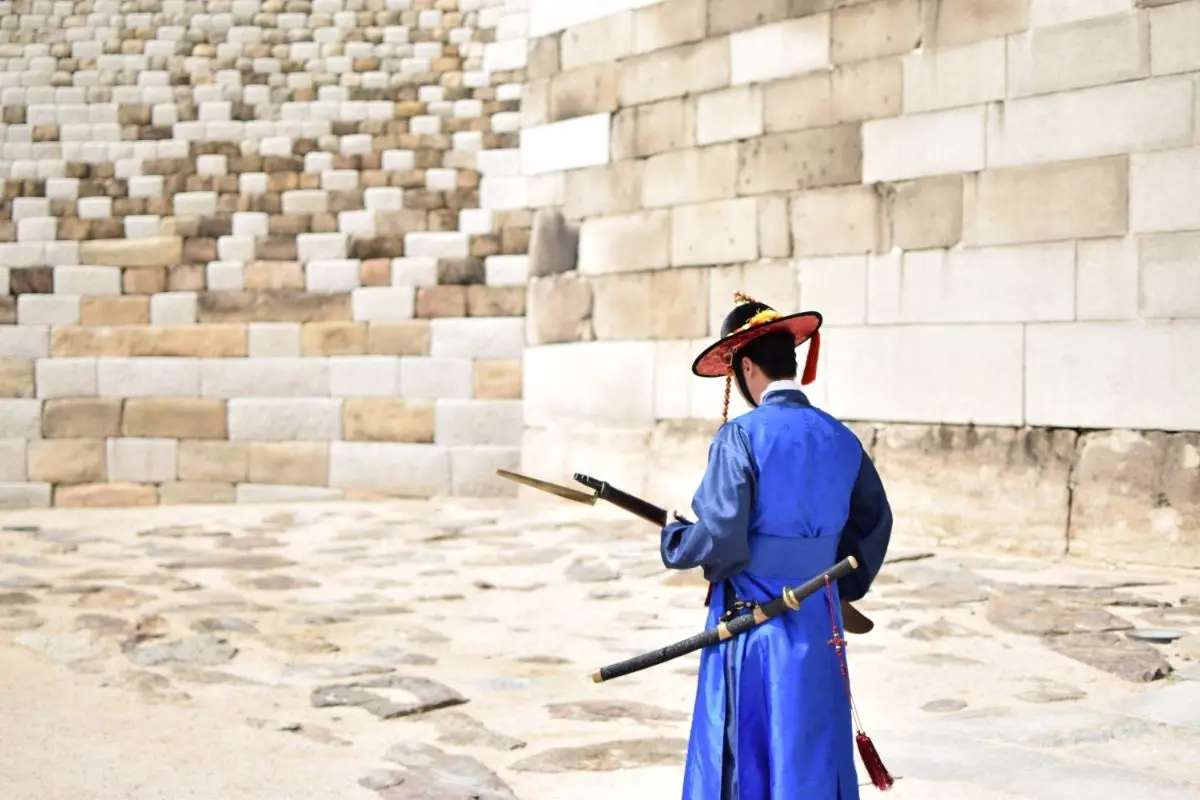
The fabric of the nagagi will either be omeshi or tsumugi, depending on the formality of the occasion and the social ranking of the wearer.
Omeshi is the more formal of the two and is a crêpe fabric with high levels of glossiness. It is another type of high-quality silk fabric. Tsumugi, meanwhile, is less formal and silky but is still a high-quality hand-spun fabric.
Final Thoughts
The kimono is equally important to traditional men’s Japanese dress as it is to women’s. Until fairly recently, the kimono was part of everyday apparel for both men and women.
Even today it is still worn by men for special occasions.
The kimono style for men is dictated by the formality of the occasion and their social rank. The more formal the occasion or higher their rank, the more material or pieces of clothing make up the kimono.
Formal situations or distinguished gentlemen will wear a hakama and haori on top of their nagagi. A slightly more casual event will call for just a haori and nagagi, whilst the most causal kimono style is to just wear a nagagi.
Unlike women’s kimonos that have ornate gara or patterns, men’s kimonos will stick to a more muted palette. You will have to look at the quality of their material to properly distinguish the formality of the occasion.

